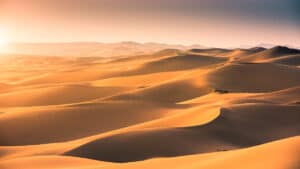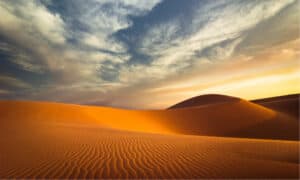Deserts found in North America are mostly located between the Rocky Mountains and Sierra Madre Oriental mountain range in northeastern Mexico. This area contains 3 major hot deserts and seven cold deserts of various sizes. Some deserts are extremely small. However, the largest can be over 100,000km2, and they are major ecosystems due to their immense size.
A desert is defined as an area of land that receives less than 10 inches of precipitation a year. These areas are usually very dry and have little to no vegetation. Close to one-third of the earth’s land surface is made up of both cold and hot deserts.
Because of their location in the western hemisphere, the ecology within these deserts varies greatly. Some plants and animals can only be found in these inhospitable environments, while others dominate multiple desert areas. From rocky cliffs to sandy dunes, each desert has its unique landscape that makes it beautiful; however, the 4 largest deserts in North America are stunning. Let’s take a look at the largest deserts in North America.
What are the Largest Deserts in North America?
1. Mojave Desert – 47,877 mi²
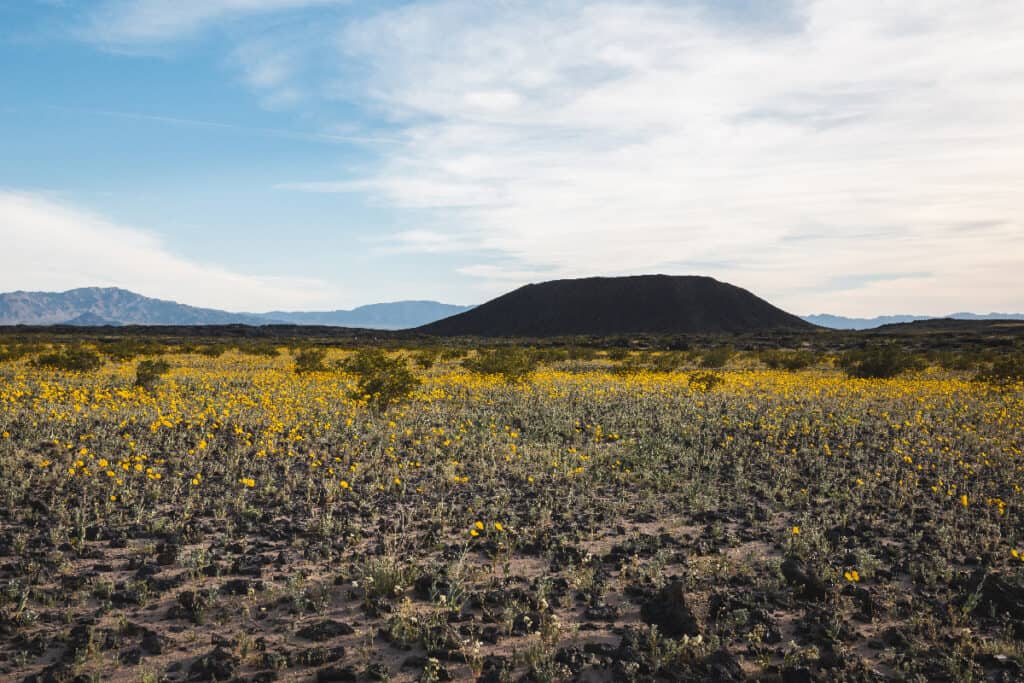
The Mojave desert is the smallest of all the hot deserts in North America.
©iStock.com/Attila Adam
The Mojave Desert is located in southeastern California and southwestern Nevada. The smallest of the four deserts makes up the North American Desert, and it sits in the rain shadow of the Sierra Nevada mountains, making it the driest of the four major deserts. The Sonoran Desert borders the Mojave Desert to the south and east though the boundaries aren’t as distinctive in the east. Flora, fauna, and climate are good distinguishers for the Mojave.
Animal species in the Mojave Desert are also typically found in the Sonoran Desert. Common animals in this desert include the banded gecko, desert iguana, desert tortoise, Mojave rattlesnake, and regal horned lizard. The Mojave Desert is also home to Death Valley, one of the hottest places on earth in the summer.
2. Sonoran Desert – 86,100 mi²
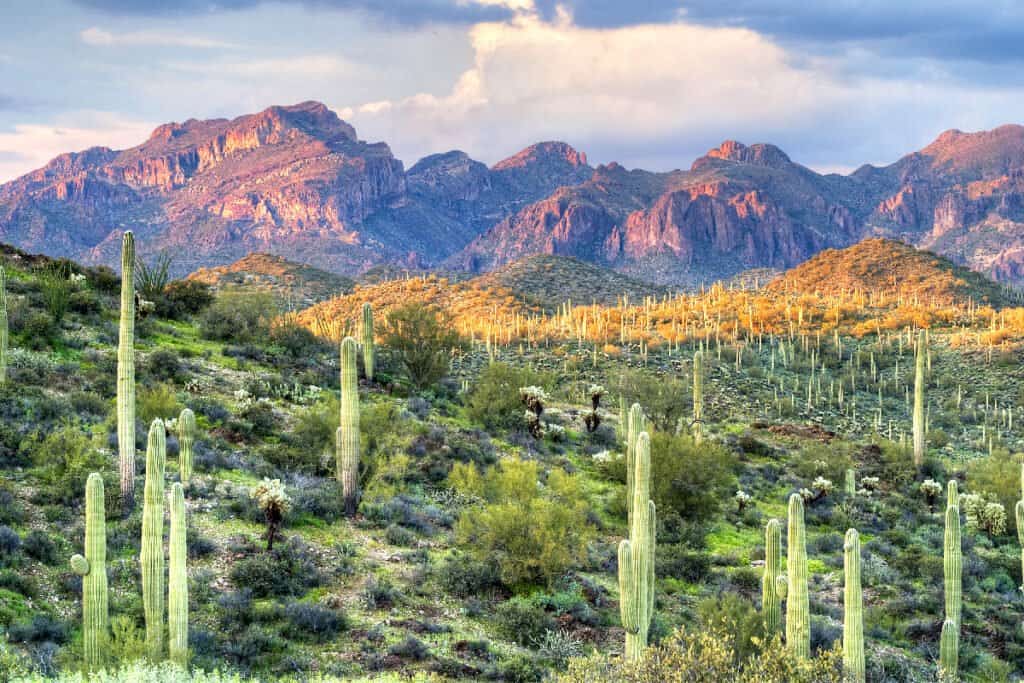
The Sonoran Desert is iconic for its cactuses and fauna.
©LHBLLC/Shutterstock.com
Covering areas in both the southwestern United States and northwestern Mexico is the Sonoran Desert. Here a variety of endemic plants grow due to the unique climate, and this desert can be easily distinguished from others because of its climate. The Sonoran Desert has heavier rainfall than surrounding deserts and provides subtropical warmth in the winter, creating a severe contrast between aridity and moisture.
The Sonoran Desert may have harsh conditions, but many plants have evolved to adapt to the desert climate. One example of a plant that thrives here is the Saguaro cactus. The Sonoran is the only place in the world where this cactus grows in the wild. Plenty of other cacti grow here as well as other plants like Creosote bush, bur sage, Indigo bush, whitethorn acacia, and velvet mesquite.
Due to its location on the western edge of North America, the landscape and ecology can vary greatly depending on the location. There are a variety of habitats like the coniferous forest, temperate deciduous forest, grassland, and thorn scrub that house hundreds of different plant and animal species across the Sonoran Desert. Within the desert area, there are at least 350 bird species, 100 reptile species, and more than 2,000 different plant species. Creatures such as the Gila monster, greater roadrunner, tiger rattlesnake, Mexican wolf, and the desert box turtle can be found in various areas of the Sonoran Desert.
3. Great Basin Desert – 190,000 mi²
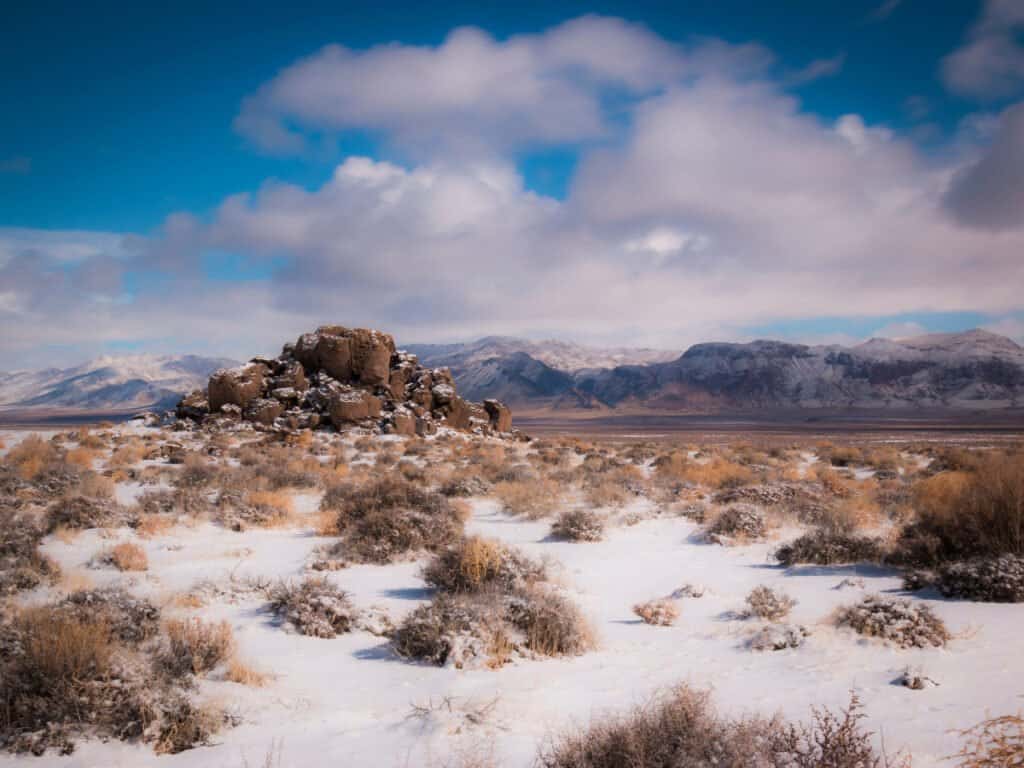
The Great Basin Desert is one of the only cold deserts in North America and gets most of its precipitation from snow in the winter.
©Robert Stolting/Shutterstock.com
The Great Basin Desert is located within the Great Basin between the Sierra Nevada and Wasatch Mountain ranges. The desert is mostly located in Nevada, and it takes up most of the state but also spreads to Utah and California, with some small portions in Idaho and Oregon. It is the largest cold desert and the third largest desert overall in North America. With more than 33 peaks in this desert, the variation between peaks and valleys has created a wide range of habitat niches.
The Great Basin Desert is distinguished by the plants and animals that make this area their home, although a set boundary is still unclear. Due to the number of niche habitats, small isolated populations of unique plants and animals are spread throughout the region. Currently, 63 of the over 600 species of animal found in the Great Basin Desert require conservation. Species like the greater sage-grouse, kit fox, desert horned lizard, and Ord’s kangaroo rat are some of the amazing creatures you can find in the Great Basin Desert.
4. Chihuahuan Desert – 200,000 mi²
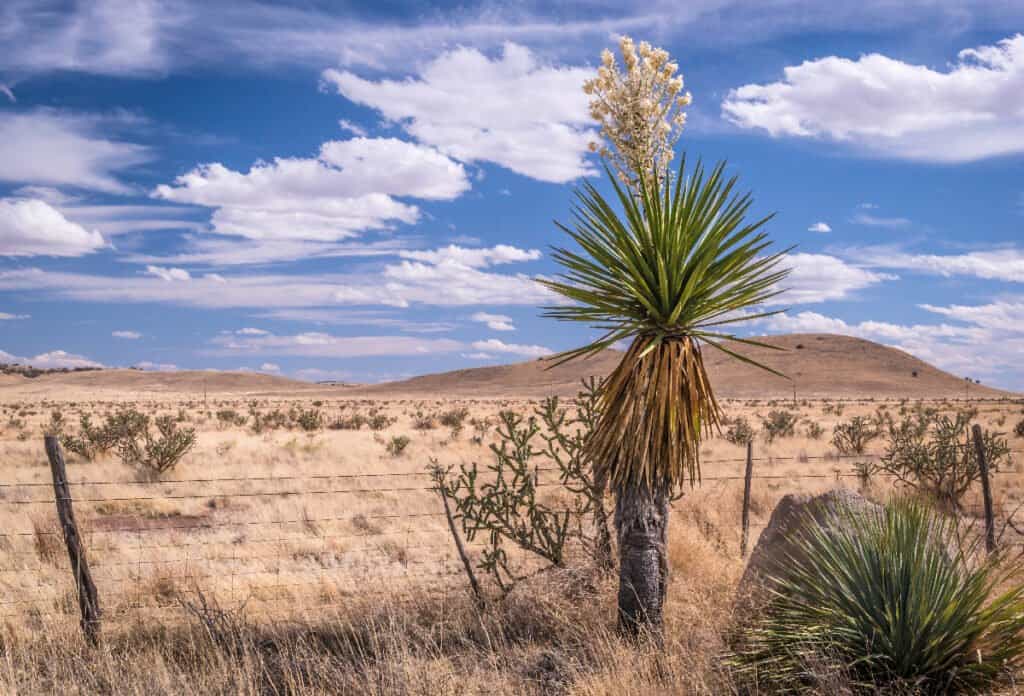
The Chihuahuan desert is the largest desert that is entirely located in North America.
©John A Davis/Shutterstock.com
Shared by both Mexico and the United States, the Chihuahuan desert is the largest desert in North America. It covers areas in northern Mexico and the southwestern U.S. like Texas, New Mexico, Arizona, Chihuahua, Durango, Zacatecas, and Coahuila. This desert is bordered by the Sierra Madre Oriental and the Sierra Madre Occidental mountain ranges and has several large mountain ranges within its borders. The bordering Mountain ranges block most of the moisture from the Pacific Ocean and the Gulf of Mexico, making most of the desert a rain shadow desert.
Due to the wide array of mountain ranges in the Chihuahuan Desert, plant life differs greatly based on location. More Herbaceous plants can be found in desert grasslands near the edges of mountains. Shrubs like the creosote bush dominate gravel areas of the valley areas of the Chihuahuan Desert. Commonly found plants in this desert include viscid acacia, tarbush, broom dalea, blue grama, and candelilla.
What Types of Animals Live in the Deserts in North America?
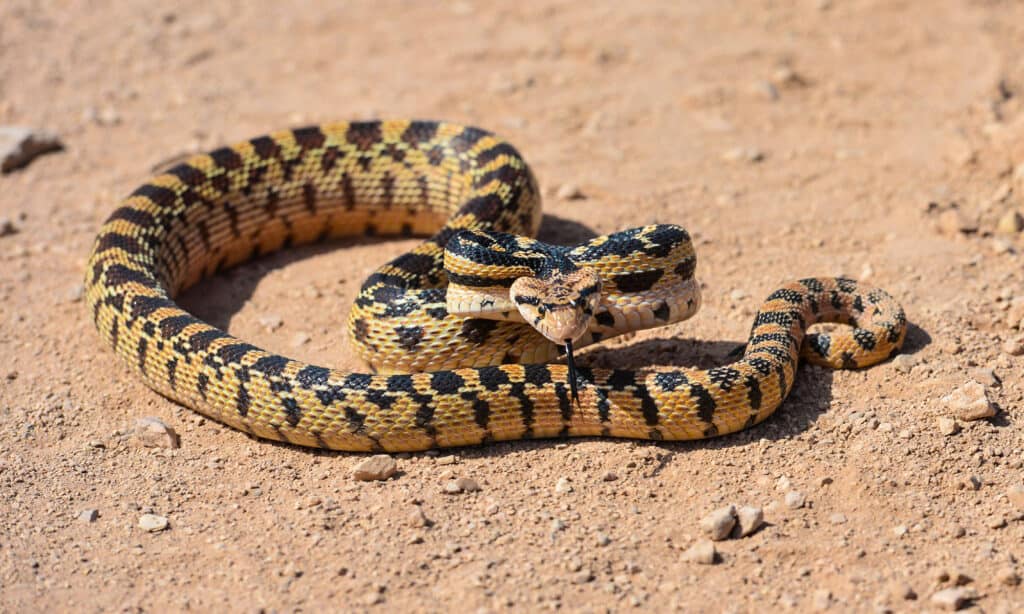
Snakes are a very common animal in a desert, and to survive the heat, they spend their time in burrows.
©worldswildlifewonders/Shutterstock.com
While deserts don’t have the largest variety of vegetation, they still are major ecosystems supporting millions of living creatures. Depending on the location, tons of animals can be found in deserts. Most desert-dwelling creatures need to be easily adaptable due to the harsh conditions of the desert. Mammals, insects, reptiles, and birds can all be found in the desert.
Depending on the area, some animals are more abundant than others. Common habitats in deserts include desert grasslands, sand dunes, and rocky cliffs. You can find animals like bobcats, bats, rattlesnakes, scorpions, and tarantulas within these habitats. Many of the animals that live in deserts have special adaptations that help them survive.
One thing an animal may do to survive in a desert is to create a burrow to live in. Animals may be inactive during the day to escape the blistering heat. Some desert animals are nocturnal, and others even have ways to conserve water in periods of a long drought.
What Types of Plants Grow in the Desert?
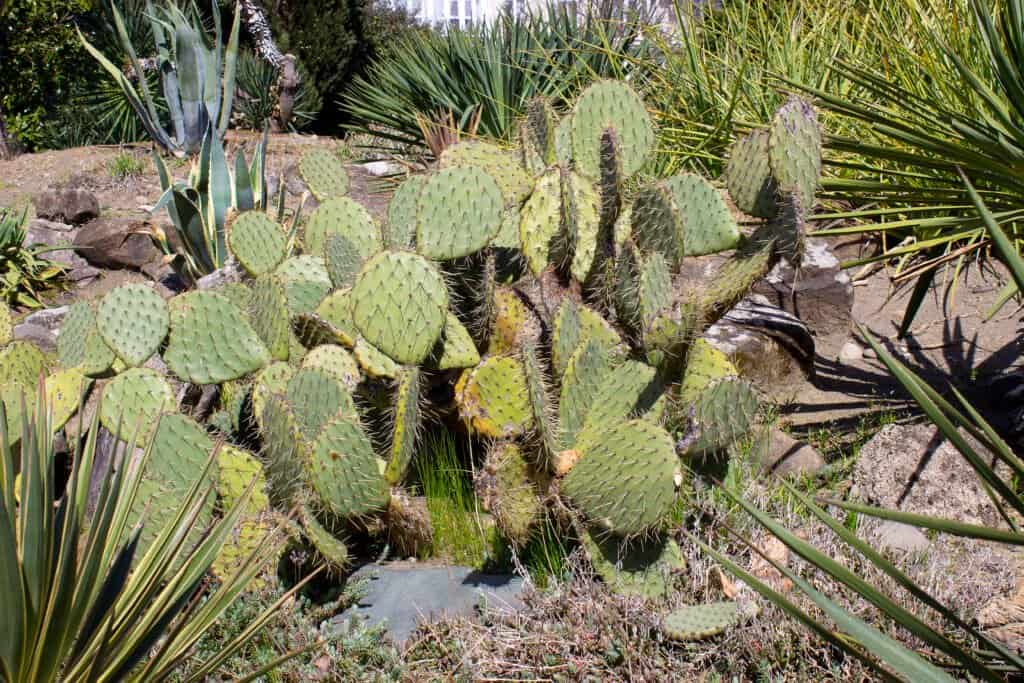
Large prickly pear cactus grows well in warm and dry climates like deserts.
©iStock.com/Marina Krisenko
Deserts are areas with harsh climates and very low moisture. For most lifeforms, water is essential to survive. In places that rarely get rainfall, plants and animals need to be able to conserve water and go for long periods without.
While it’s not an ideal place for most plants, some species have evolved so they can thrive in these areas. Most deserts have a variety of habitats within them, so certain plants have become accustomed to each environment. Unlike plants found in other habitats, desert plants can go long periods without water and remain healthy.
Plants like cacti need very little water, so they do well in hot dry weather. The Joshua Tree is a great example of thriving desert plants, and they are only found in the Mojave Desert and have thicker leaves that can hold moisture. Other common plants found in the desert include the prickly pear cactus, brittlebush, agave, desert sage, rattleweed, California milkweed, and jewel flower. Deserts are filled with life, made for the extreme waterless conditions.
Before you go, take another look at the 4 Largest Deserts in North America:
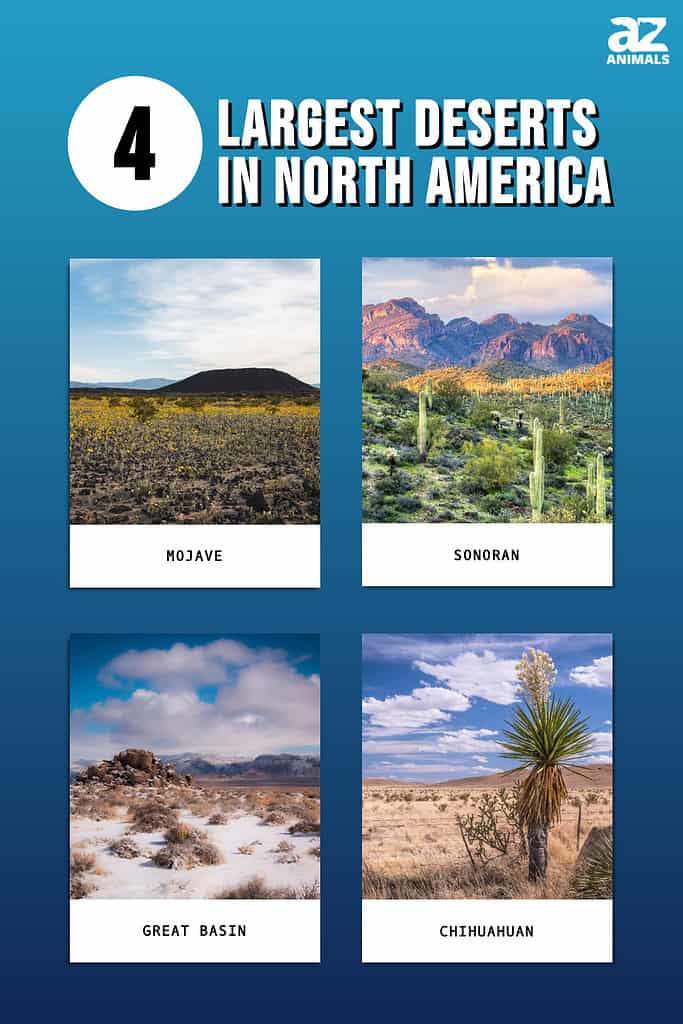
What’s Next?
- 7 Hottest Deserts on Earth are Absurdly Warm
- The 10 Most Amazing Desert Animals
- Discover 6 Desert Dwelling Spiders
- 7 Hottest Deserts on Earth are Absurdly Warm
The photo featured at the top of this post is © Nate Hovee/Shutterstock.com
Thank you for reading! Have some feedback for us? Contact the AZ Animals editorial team.




